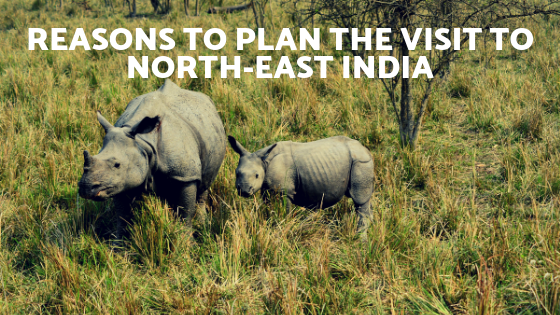North-East India is the one-stop destination for all travelers. There are several places to visit in North-east India. Still untouched by the bustling city life, the region of Assam, Meghalaya, Nagaland, Arunachal Pradesh, etc still have natural scenic beauty that has not been destroyed by the umbrage of travelers yet. There is a lot to be explored in North-East India which is why it becomes the best offbeat place to travel to for all those who have already seen or have no interest in seeing the “popular” places. The top 5 things that will compel you to visit North-East India are:
The Tribal communities
North-East India is brimming with unique tribal communities. Even in the modern age, these tribals live completely cut-off from the outside world and whether it is the Apatani Tribe in Arunachal Pradesh (fascinating because of their tradition of facial tattoos) or Head hunters in Nagaland, or Galo tribes, each tribe has a unique and fascinating culture that one would love to get familiar with. But it is best to find a local guide who would inform you about the tribes and their behavior beforehand. While generally, they are welcoming to tourists, you must not do anything that they find offensive.
Rare cuisines
Being in North-East India would make you feel like you are not in India at all since the seven sisters have a unique identity. While cuisines in the rest of the country is identified by the rich use of spices, in North-East states, different ingredients like bamboo shoots are used to flavor the cuisine. Moreover, in certain areas, the cuisine is inspired by Tibetan or Nepali style of cooking. Some of the must-try dishes are Narasingha masor jhol which is a specialty of Assam, Smoked pork with bamboo shoot and Gundruk in Sikkim.
Rich scenic beauty
The beauty of North-East India is beyond what one can imagine. There is no shortage of challenging treks that one can go on, there are many offbeat destinations that make for a memorable road trip and waterfalls, pristine forests and tea gardens are a common sight to be enjoyed. You can go on The Bailey Trail Trek in Arunachal Pradesh for spectacular views or Tawang or living root bridge. Moreover, the natural landscapes are credited with making travelers grow spiritually after their visit to North-East India.
Endangered wildlife to be seen
Along with magnificent views, North-East India is also home to endangered wildlife species like the one-horned rhino. North-East India has many National Parks where travelers can go on Safaris to see endangered animals. One of the must-visit parks is Kaziranga National Park situated in Assam. Nokrek National Park is also a good option for travelers in Meghalaya.
It is a spot that highlights diversity in India
Though a part of India, the seven sisters differ from the rest of the country in all ways. The culture is closer to that of Tibet and Nepal while the cuisines are also completely different. The people of North-East India resemble people from China or Burma in their appearances and the hassle-free atmosphere adds a fascinating element to the beauty of North-East India. Not only this, it boasts of places like Kamakya temple, which has religious importance too. And the people respect their natural surroundings a lot. Sikkim, a part of North-East states is the first state to be completely organic.
Therefore, North-East India is a crown jewel of the country and makes one feel like they are visiting a completely different country altogether. Apart from all the things mentioned above, there is a lot to be seen in North-East India. One can see the Tibetan culture reflected in people’s lifestyles and enjoy the rich handicrafts.
